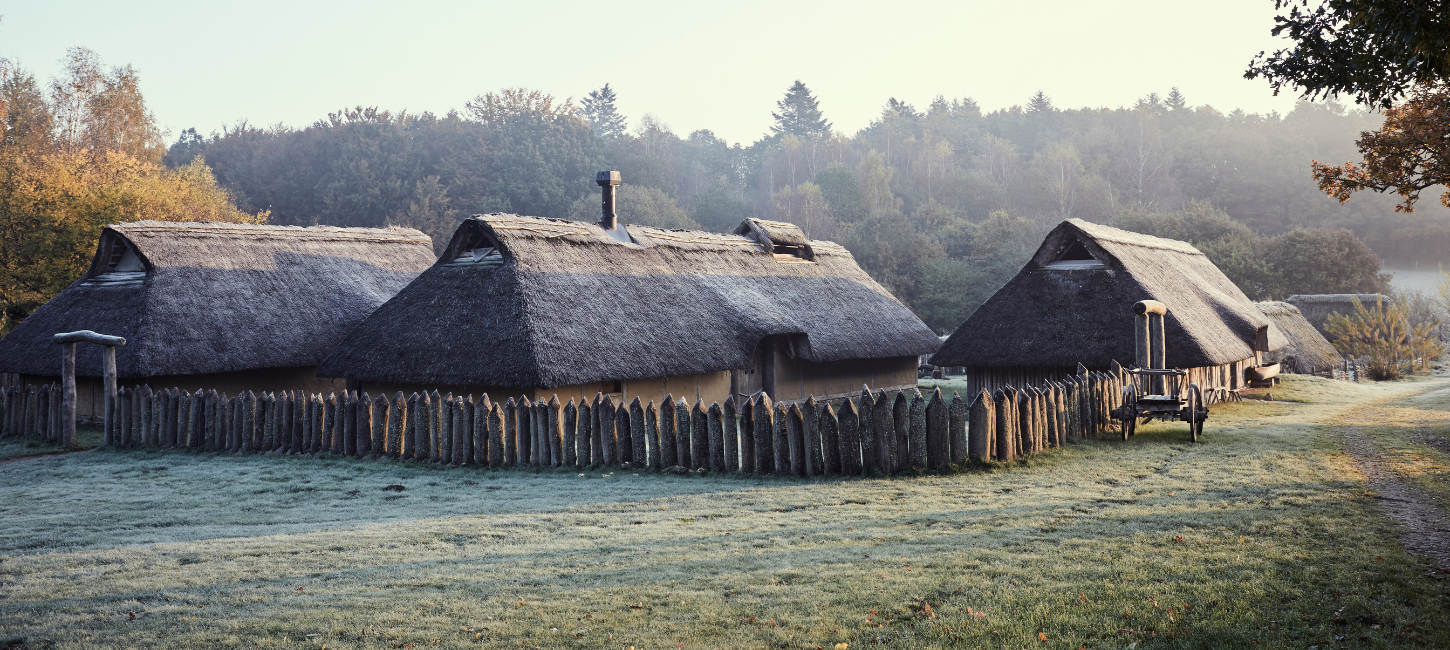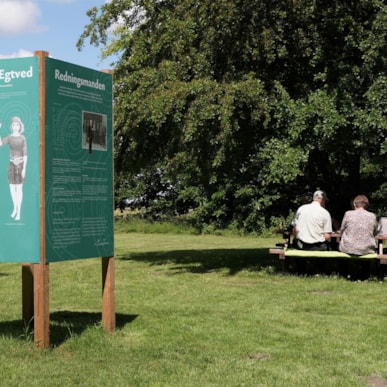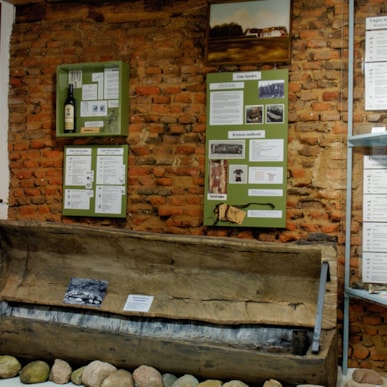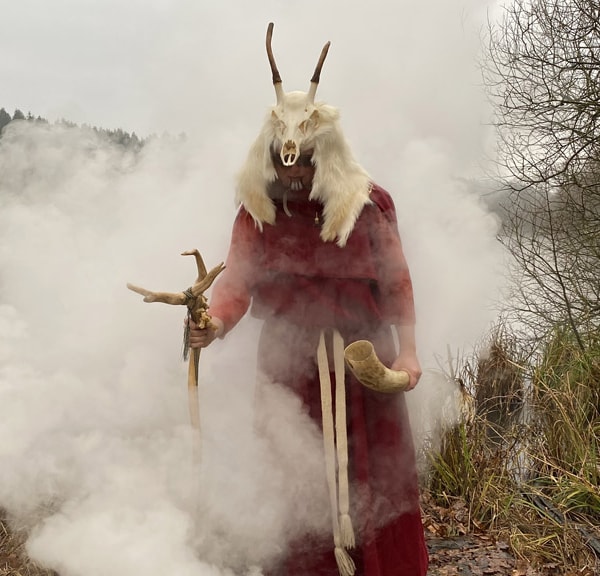Experience more of history from the area
If you are looking for historical secrets, we at VisitVejle have a few recommendations you might not know about. Explore the Vejle area, where you will find hidden treasures such as runestones, burial mounds, and ruins.
Store Rygbjergsten (rune stone)
Experience "Store Rygbjergstenen", a rune stone from the 10th century, which stands on a small burial mound at Frederikshåb near Egtved. The rune stone is called Denmark's first love poem. The stone stands on a small barrow and bears the inscription: "Bryden Tue rejste denne sten over Thorgunn sin lege. Disse stave vil leve længe" (Bryden Tue erected this stone on the grave of Thorgunn. These stakes will live for long.) The rune stone was once split in two, but has since been erected in its original place.
Firehøje og Kong Rans Høj (barrows)
Firehøje is located a short distance north of Randbøl Church along Hærvejen south of Gødding Skov, and the four burial mounds from the Bronze Age are located in way that you can easily spot them. From the top of the four blueberry-covered mounds there are good views to several other mounds. At Randbøl Church, King Rans Høj is located in the cemetery.
On udinaturen.dk you will find maps and more information about the mounds.
The Barrows by Skærup
From the motorway rest area Skærup Øst, a staircase leads up to a 3400-year-old Bronze Age burial mound. The mound is built on top of an old Stone Age barrow. The barrow was found in 1992 near the village of Tårup during the construction of a new motorway section from the Little Belt Bridge to the E45 and then moved to Skærup.
Read more about the pre-historic monuments on the displays next to the barrows.
Voldstedet Trindvold/Trindhøj (Viking Age fortress)
The fortress Trindvold, also called Trindhøj, are the remains of an old Viking Age fortress at Brejning, which together with other fortresses from the Middle Ages, could protect against enemy attacks from the sea side. The fortress mound has a small foundation and is the nation’s best preserved fortress.
Visit the rampart on a fresh hike in the area close to Vejle Fjord by Kellers Park.
See a map of the route on Vejle Municipality’s website.





